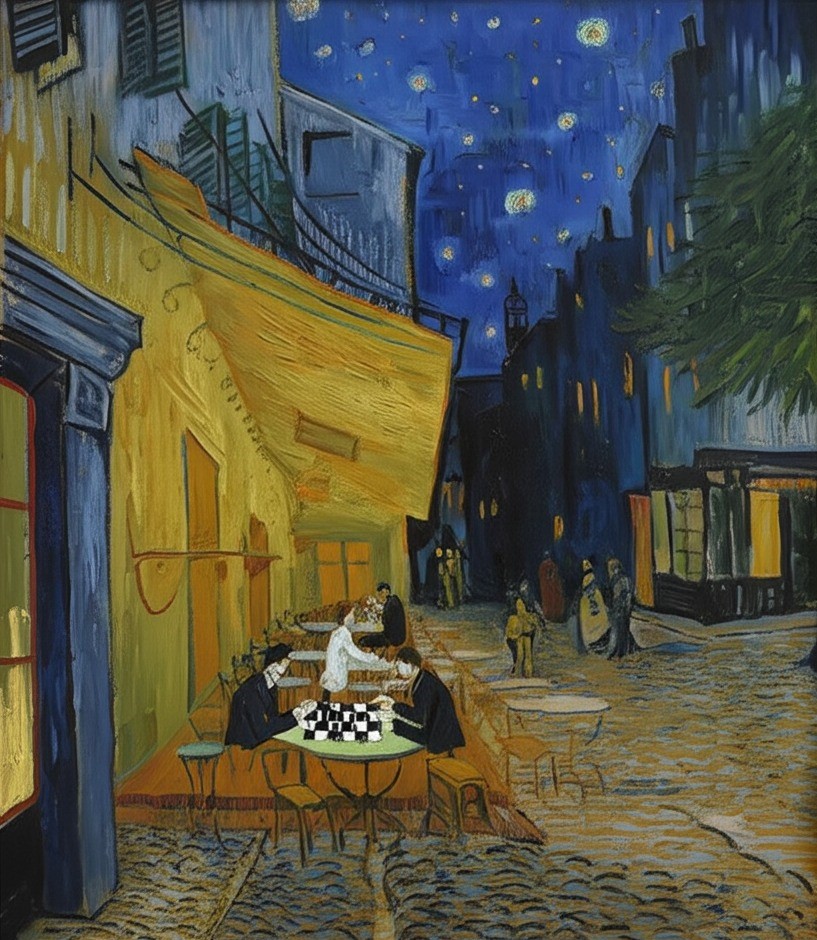
Playing chess with a friend felt like a journey.
A real trip.
He locked on the task, fully.
It was like I was playing a 1600, not an 800 elo player.
Why?
Because he always went for the best current move.
No overcomplication, no 4–5 steps ahead.
Just the best move, right here, right now.
That alone boosted his skill tenfold.
And you know what?
That’s exactly how life works.
Focus on making the current best move as quickly as you can.
Then move on to the next.
No need to fight the world by planning 10 moves ahead.
That just clutters your mind.
Get rid of the overhead.
Focus on immediate optimality.
Maybe obsessing about the future is just a burden.
An extra cost that weighs us down.
The only real power we have is in the present.
That’s where we can actually do something.
If you’re stuck in the future or the past,
You’re missing the point.
In the present, you have real context, real sensory input.
Embodied Cognition.
So do the best you can, right now, then let the next moment unfold.
You know who else does that?
AI models.
They predict the next token, not the entire paragraph.
And still, they generate incredible results.
That’s the magic of living and deciding in the “now.”
Trying to plan too far ahead?
It’s basically making decisions without the context you’ll have in the future.
Mike Tyson said,
“Everybody has a plan until they get punched in the face.”
Exactly.
Plans made without real-world context are on shaky ground.
So, the optimal decisions:
Made in the present, for the present.
LLMs do it.
And it works.
We humans try to think it all through in advance,
Then wonder why real life rarely matches the blueprint.
We conjure up big stories, then scramble to fill the gaps.
But living is different from thinking.
Sometimes, the AI approach is better.
Just the next token, the next move.
“Failing to plan is planning to fail,” they say.
Honestly?
That might be conceited.
We’ve let that motto become a doctrine.
But maybe it applies only to certain domains.
Planning too much is a recipe for failure,
Because the world moves faster than your plan can keep up.
Here’s a more universal approach:
- Have a billion-dollar direction (the macro).
- Make only the best next move (the micro).
- Let emergence handle the long term.
What’s a real waste of life?
Not using the present well.
This moment—right now—is when you hold the most context.
It’s where you can physically interact with the world.
Yet we spend our time in the past or the future.
The temporal window where we have no ability to interact with the world
That’s powerless.
Not harnessing the present means wasting your life.
It’s turning away from the best vantage point you have.
No wonder Zen, Tao, Dhyan, they all say:
“Focus on the now.”
Countless tales, fables, philosophies:
Don’t dwell on the past or the future.
Live the present, act in the present.
Nishkam Karma: do without longing for the fruit.
Because the fruit isn’t in your grasp yet.
Only the action is.
Action is in present and fruit is not.
All these ancient heuristics?
They design emergent systems.
Meanwhile, we’re fixated on “engineered” ones.
But in a dynamic world, that’s questionable.
Whatever advantage you think planning gives you,
Is dwarfed by the advantage of present context.
Look at evolution.
It faces a numbers game, then filters out what doesn’t work.
Does it plan for future conditions in detail?
No.
It just spams enough good actions so survival emerges,
No matter what.
Enough single-step “moves” through reproduction,
And it wins the toughest game: survival of life in a world that fights life.
Evolution’s north star is survival.
Its next best move?
Reproduce with variation.
No grand plan beyond that.
Just vision and the immediate move.
That’s the ultimate system, and it does it without planning five steps ahead.
One step at a time.
For me, the vision is “convex volume,”
The next best move is “leverage.”
Convexity means aiming for a big upside, small downside.
But it might not succeed all the time.
Leverage means pushing every present action to its highest potential.
Convexity is about asymmetric bets.
Leverage makes every bet as powerful as possible.
This is how evolution, the most successful algorithm on Earth, operates.
Emergence, not rigid engineering.
In dynamic environments, we can’t afford to be over-engineered.
So keep a vision,
Then make the best next move, grounded in full context and first principles.
Anything more leads to corrosive overthinking.
Evolution literally encodes a natural boundary:
You can produce a child, not a grandchild.
You can’t jump steps; you can only do the next one.
And that’s how the best system in existence does it.
Billion-dollar direction, next best move, let emergence handle the rest.
That’s all you really need.
ABOUT CONVEXITY AND LEVERAGE
Convexity: Force unlimited upside, minimal downside.
Leverage: Use current actions to their absolute max.
One is your long-term edge,
The other is your short-term efficiency.
Like buying the winning lottery ticket,
And also rigging the odds in your favor.
That’s where you play the right game (convexity)
And make every move in that game count (leverage).
That’s the formula:
– Vision for the macro.
– Action for the micro.
– Trust emergence for the future.
See the bigger picture?
Sure.
But act on this moment.
Let life be emergent.
After all,
That’s how the most successful system on the planet :Evolution
Plays its game.
Conclusion
- Choose a vision.
- Execute the best move now.
- Let the future take care of itself.
That’s the chess trip.